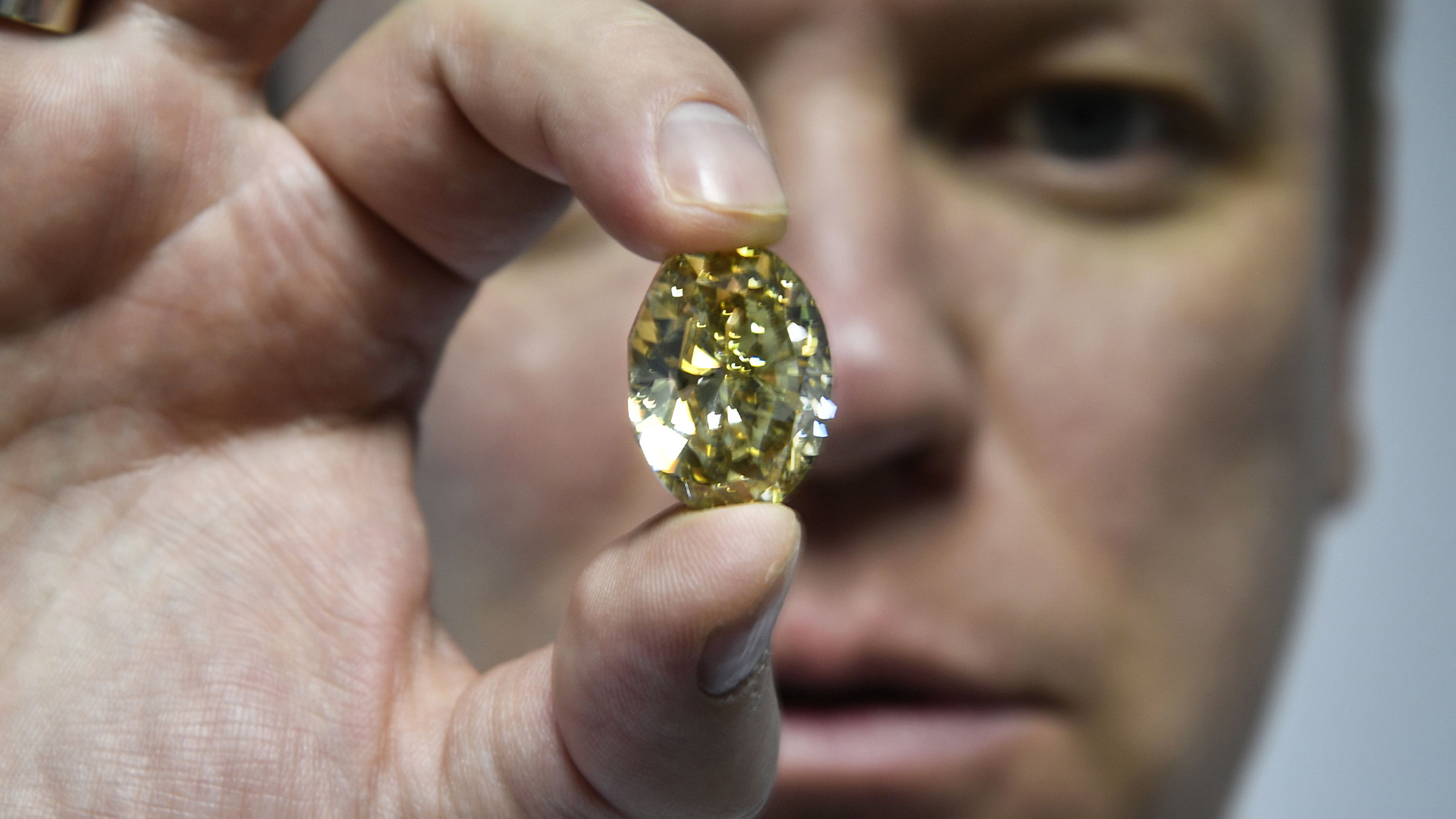
Simone Del Rosario: For two years, Ukraine has battled for its sovereignty. Russia’s invasion is reducing cities to rubble. Thousands of civilians have died in the conflict. And a new report says Russia can sustain its assault for another two to three years, maybe even longer. Did your diamond help pay for this war?
Russia produces about a third of the world’s diamonds. Those diamonds bring in an estimated $4 billion per year. President Biden did sanction imports of Russian diamonds in March 2022.
Martin Rapaport: The first thing they did, which is typical of government, is they fudged it.
Simone Del Rosario: Martin Rapaport founded the Rapaport Group, the world’s primary source of diamond prices.
Martin Rapaport: You got to take an understanding of what’s going on here. The India is buying almost all of those Russian diamonds and cutting them in India. So when he used the phrase, the president used the phrase, Russian origin, it was a white washing exercise because all the diamonds are cut anyways in India, and once they’re cut in India, they’re no longer Russian origin. Now they’re Indian origin.
Simone Del Rosario: Roughly 90% of the world’s rough diamonds are cut and polished in India. India is a strategic partner of the US. Which makes any action on diamonds politically challenging. In 2024, the US is ready to close the loophole.
The Treasury Department announced changes to these diamond sanctions to include those that are mined, extracted, produced or manufactured wholly or in part with the Russian Federation. Meaning diamonds with any history in Russia fall under the rule.
On March 1, the ban goes into effect for non-industrial diamonds 1 carat or greater. By September, it includes diamonds weighing half a carat. The latest sanctions are not just from the U-S, but done together with G7 nations. G7 is giving themselves until September to announce a system to trace the gems’ origins.
Martin Rapaport: Now we have all these self-interested foreign parties who are literally pigging out on the idea that they can control the diamond markets.
Simone Del Rosario: Belgium wants all diamonds to be certified through Antwerp, known as the diamond capital of the world.
Martin Rapaport: It’s absurd. It’s ridiculous.
Simone Del Rosario: It’s a proposal the diamond industry is pushing hard against. De Beers CEO Al Cook warned Bloomberg about potential unintended consequences.
Al Cook: We certainly believe that we should avoid a single node a single place of certification and instead we should allow African countries that have produced ethical diamonds for decades to have the freedom to export those diamonds where they want in the world.
Simone Del Rosario: Anything else, he warned, could make ethical diamonds far more expensive.
Martin Rapaport: We all want to be in a situation where we can have sanctions that are effective and efficient.
Simone Del Rosario: Rapaport has proposed the U-S use existing blockchain technology like Tracr, which tracks diamonds from mine to market. A diamond may change hands a dozen times or more in this journey.
Martin Rapaport: So United States Customs can sit back and say, ‘Oh, you’re importing diamonds, give me the number, give me the Tracr number for this diamond,’ and they can see the entire supply chain. So even if it came from a legitimate mine, but it was handled or traded somewhere by a sanctioned entity, bingo, the United States says these diamonds cannot come into the United States.
Simone Del Rosario: Rapaport’s proposed U.S. Diamond Protocol would put the onus on the government to clear diamond imports, not jewelers. It’s a proposal he’s also shared with G7 countries.
If achieving effective sanctions on Russian diamonds were easy, it likely would not have taken two years of war to get to this point. But now G7 is months away from requiring a process with real prongs.







